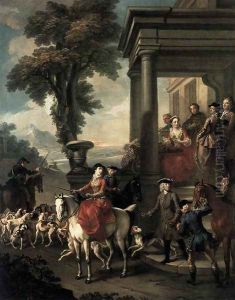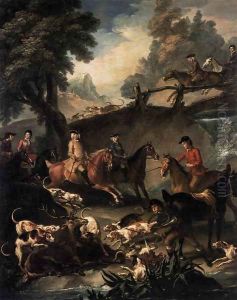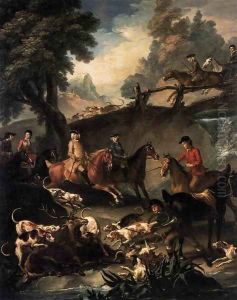Pieter Jan van Reijsschoot Paintings
Pieter Jan van Reijsschoot was a Flemish painter born in 1702 in Ghent, which was then part of the Spanish Netherlands. He is known primarily for his work as a portrait painter and for his religious compositions. There is, however, limited information available about his life and work, as he is not among the most widely recognized artists from this period.
Van Reijsschoot's artistic career unfolded during the Rococo period, which was characterized by elaborate ornamentation, asymmetrical values, pastel color palettes, and often playful and witty themes. Despite the general trends of the time, van Reijsschoot's work often retained a certain degree of the Baroque influence, with a focus on dramatic effects and emotional expressiveness, which was typical of the earlier period.
He was active in Ghent and became a master in the local Guild of Saint Luke, an association of artists, in 1725. His contributions to the artistic scene in Ghent included both his original works and his influence on other artists as a teacher. Van Reijsschoot's portraits are known for their attention to detail and the lifelike rendering of his subjects. In addition to portraits, his religious paintings often adorned the walls of local churches and convents, reflecting the Catholic Counter-Reformation's emphasis on art as a vehicle for spiritual engagement and the reinforcement of religious values.
Pieter Jan van Reijsschoot passed away in 1772. While he may not be a household name, his work provides valuable insights into the artistic milieu of 18th-century Flanders and the transition from Baroque to Rococo styles in Flemish art. His legacy is preserved in part through his paintings that remain in private collections and museums, as well as through the historical records of the Guild of Saint Luke, which document his role and standing within the artistic community of his time.


